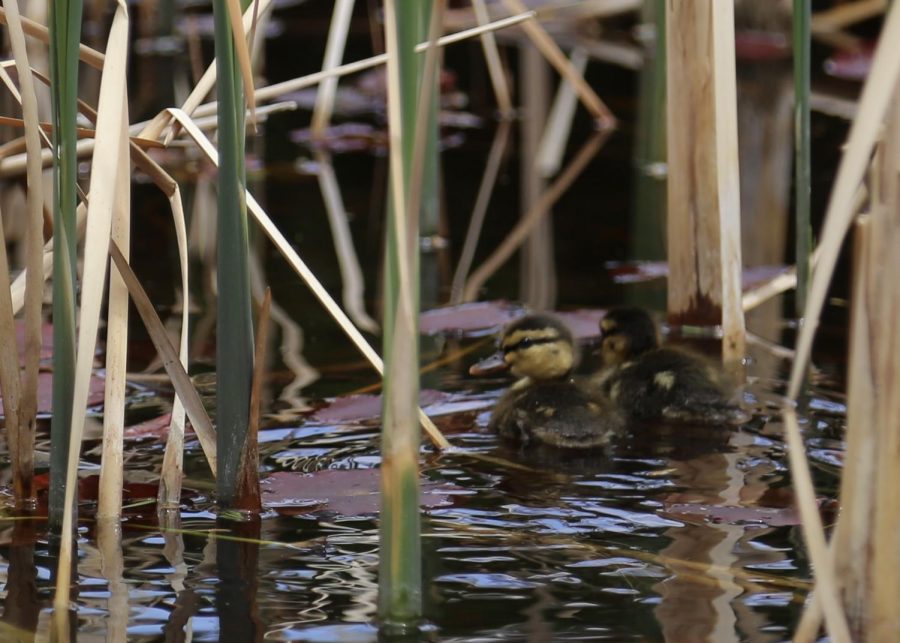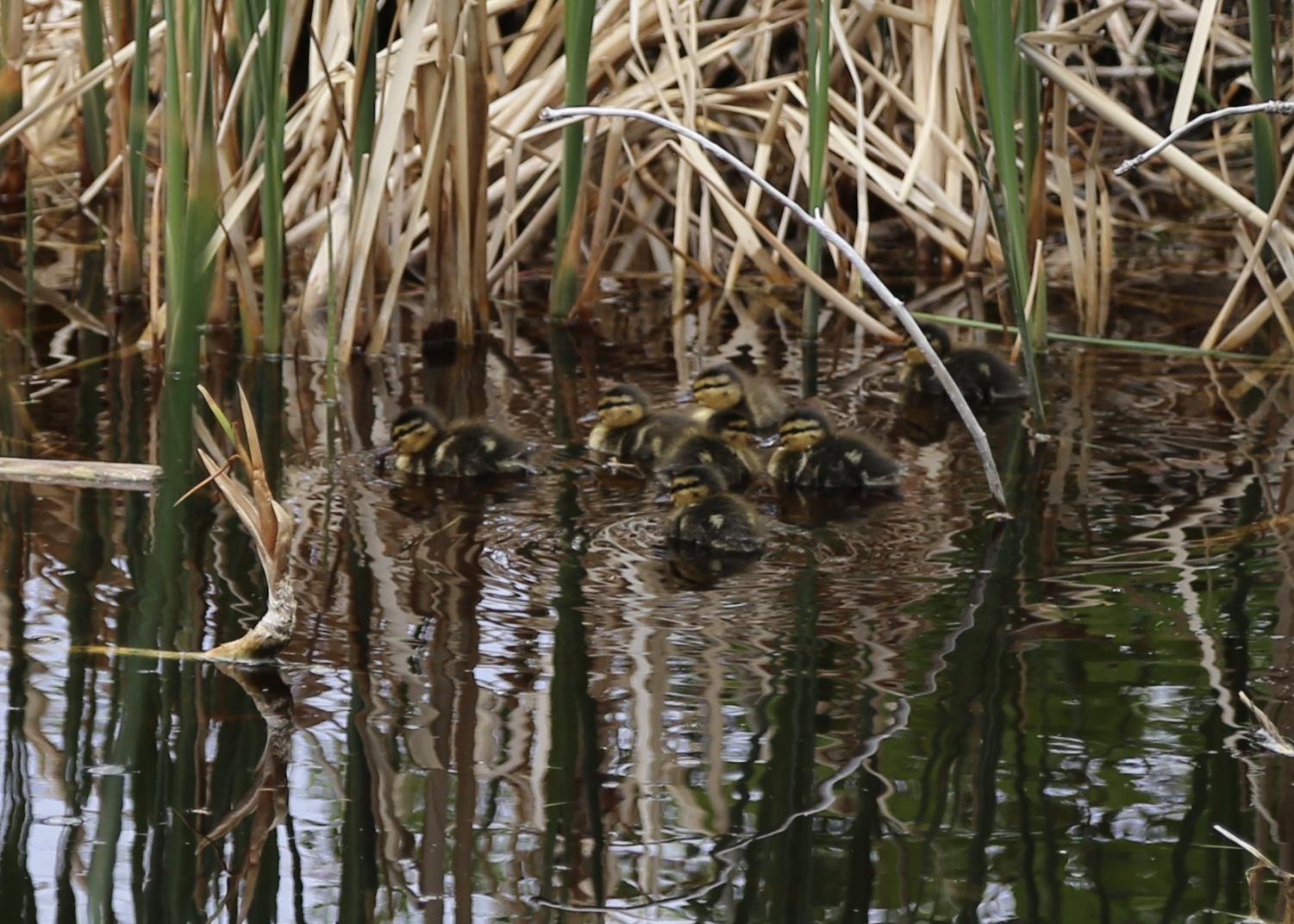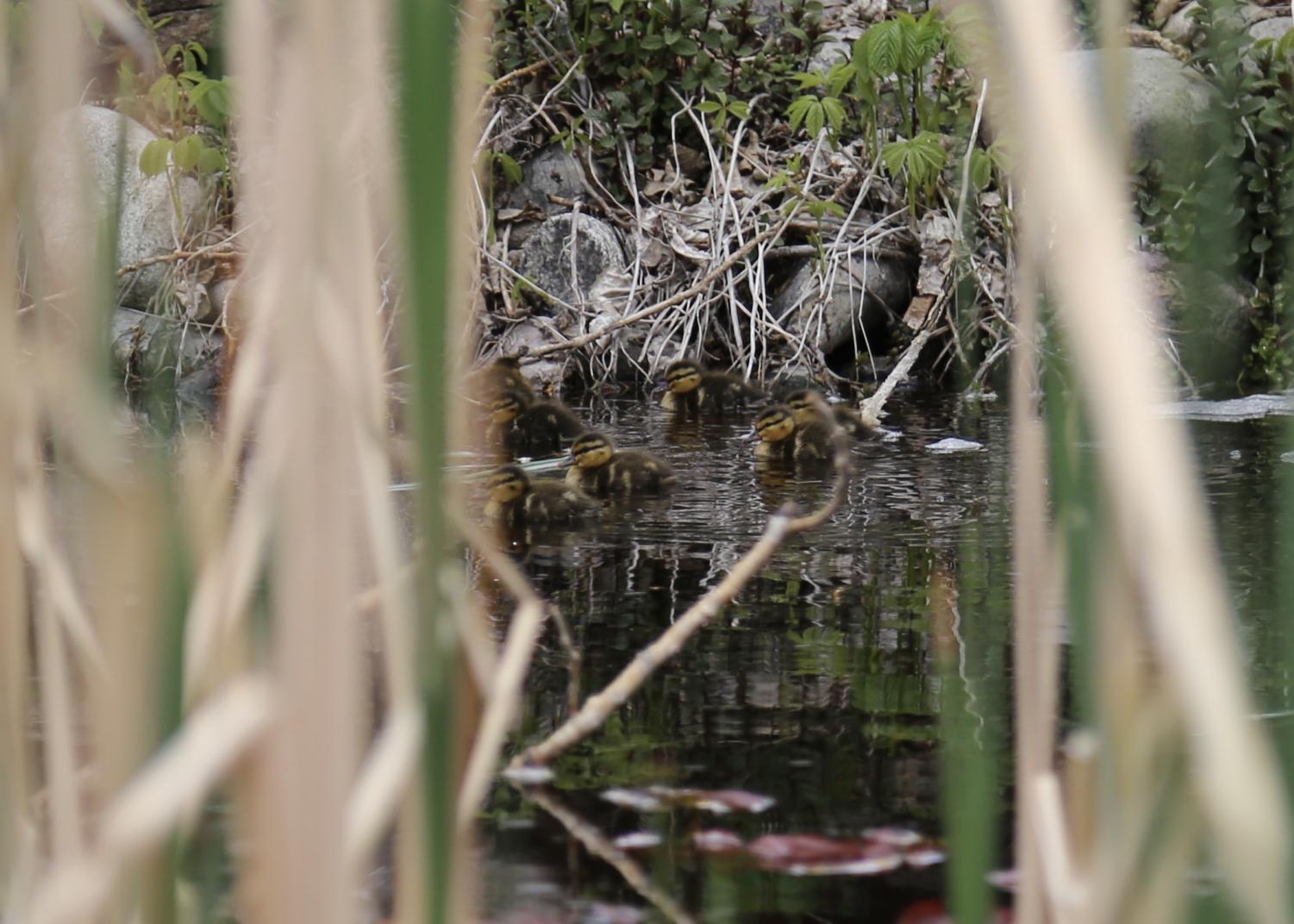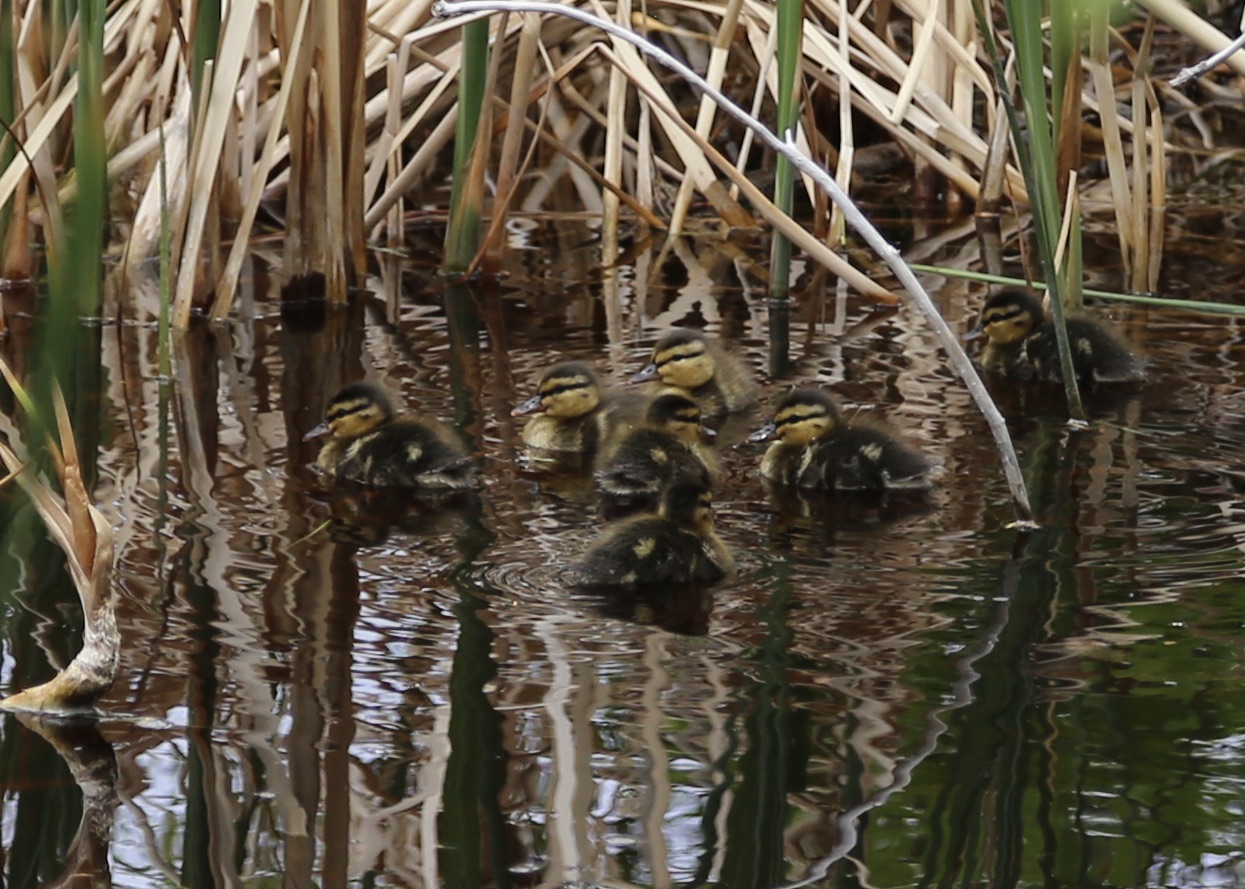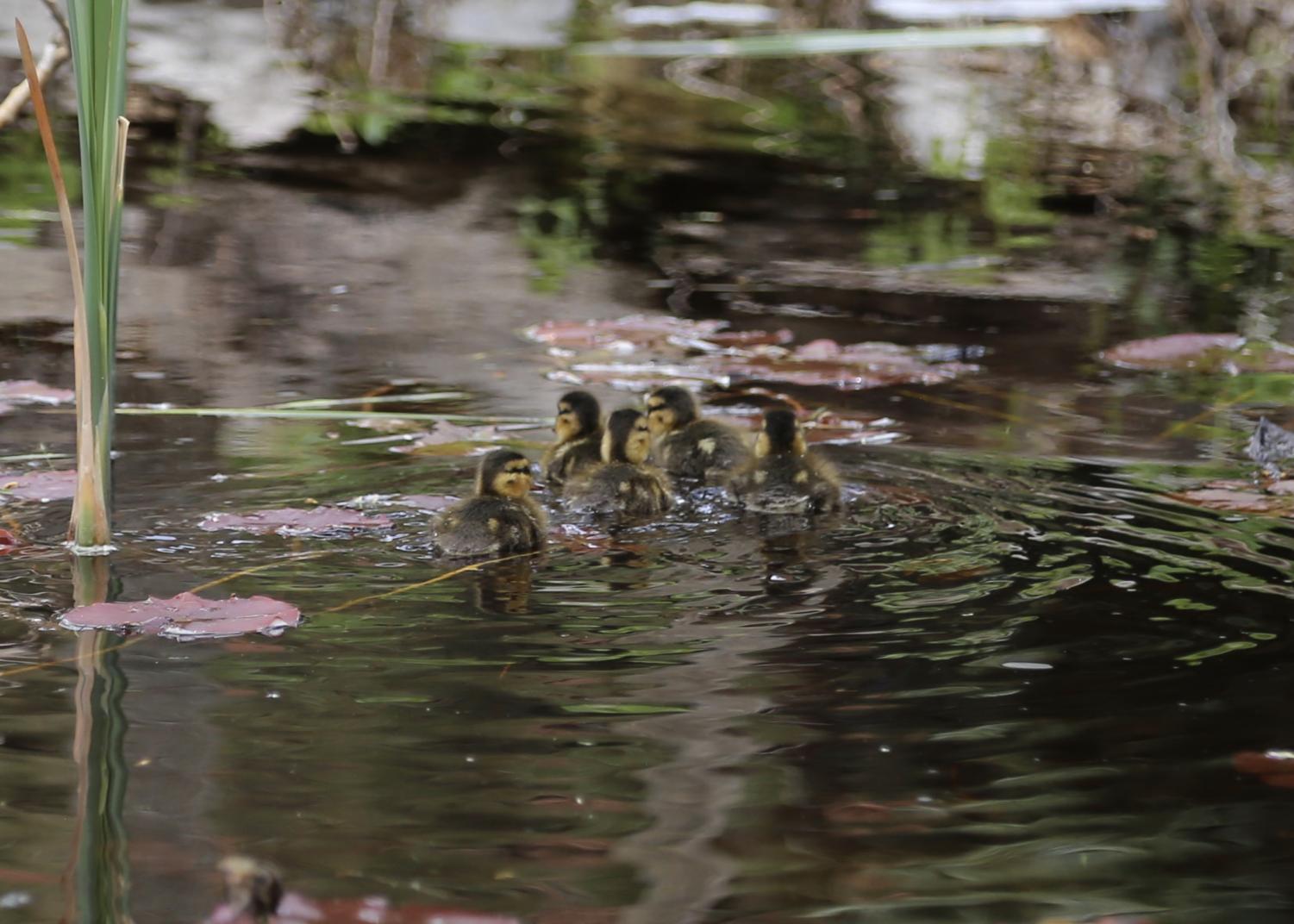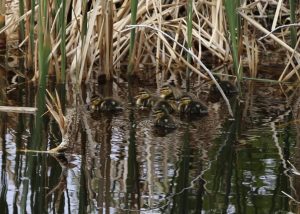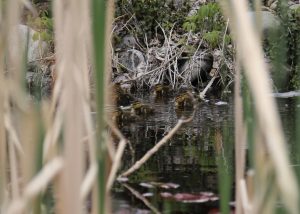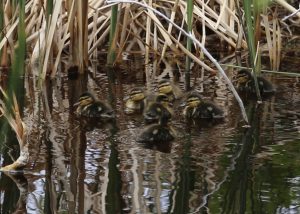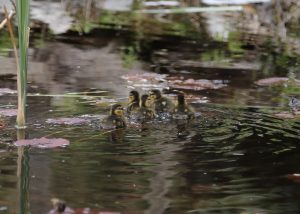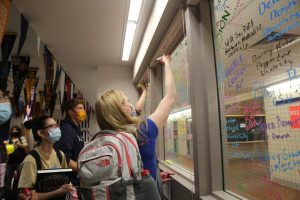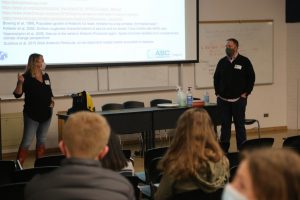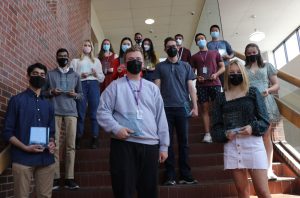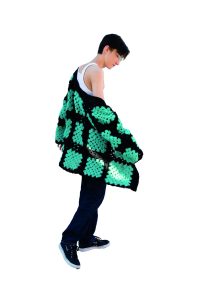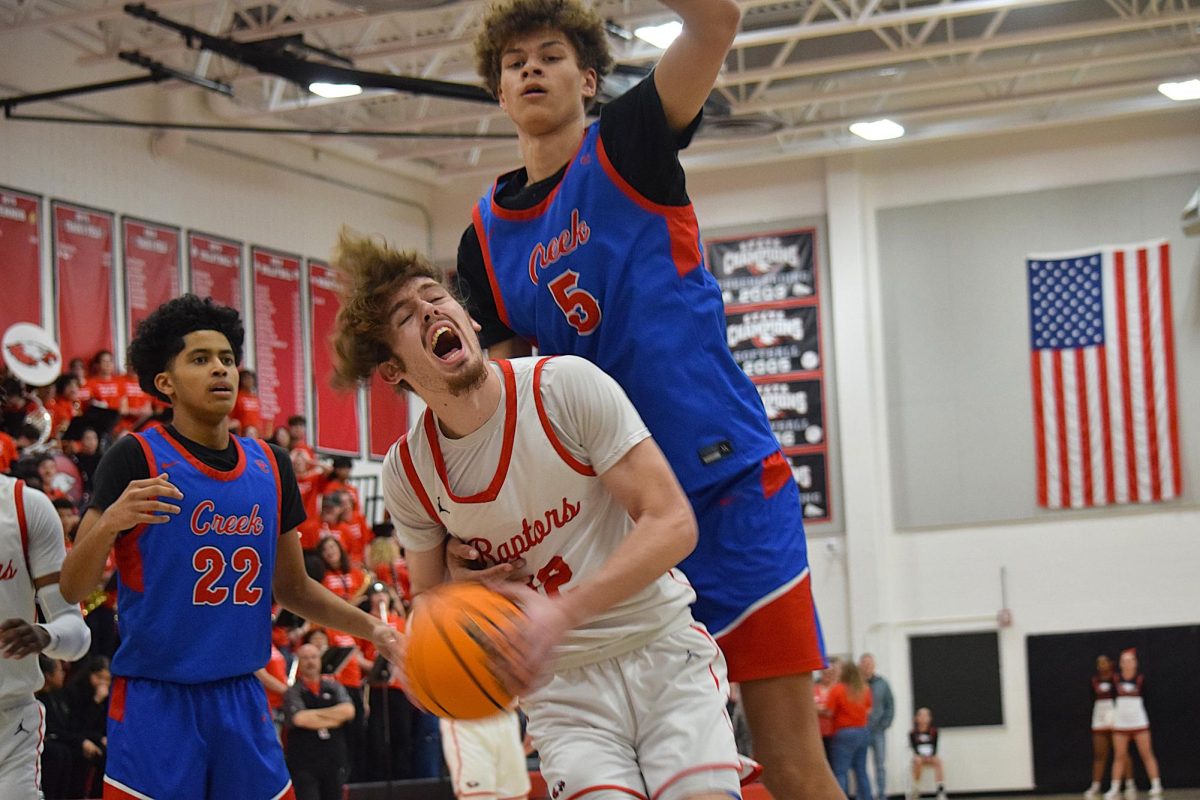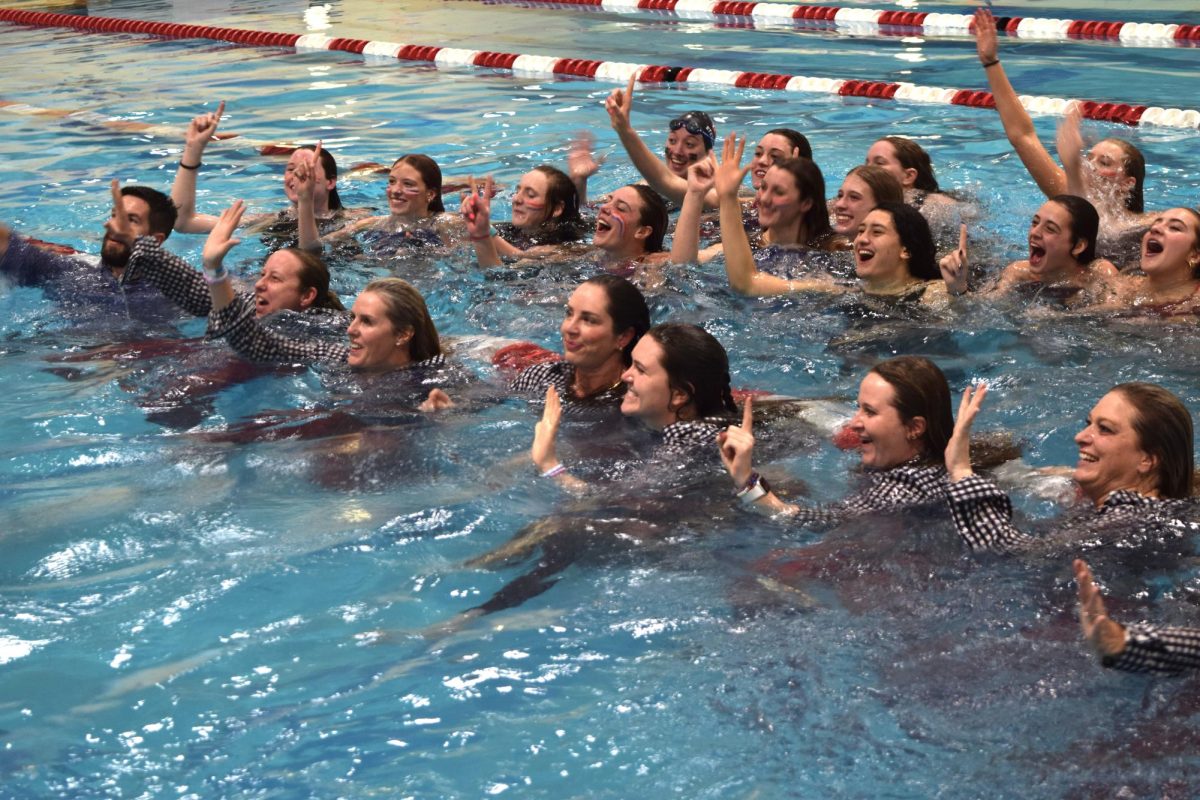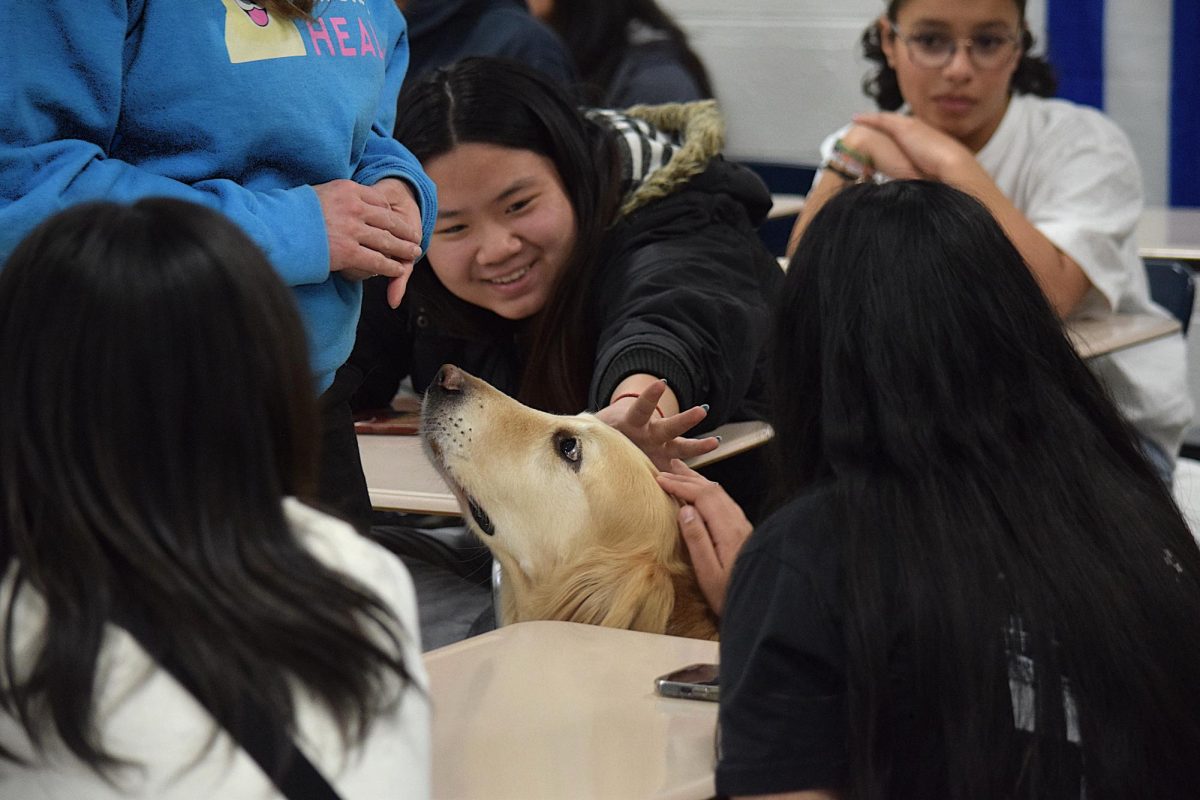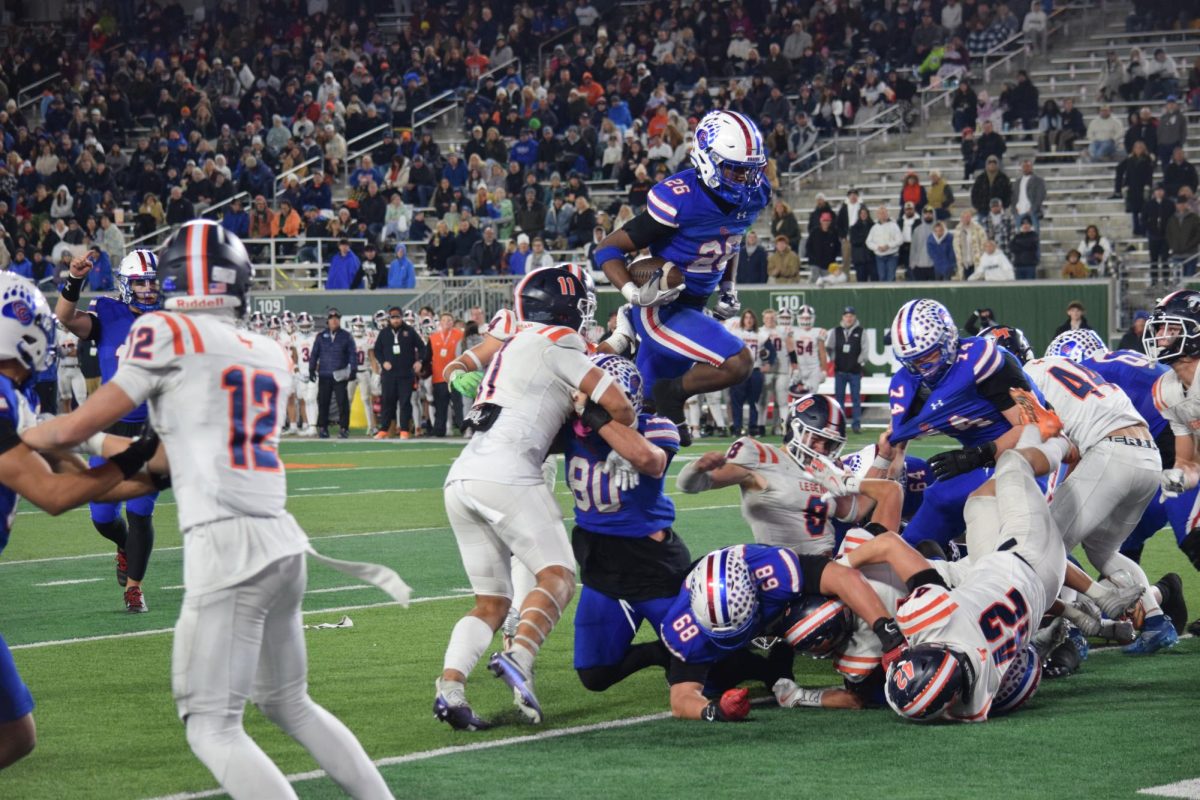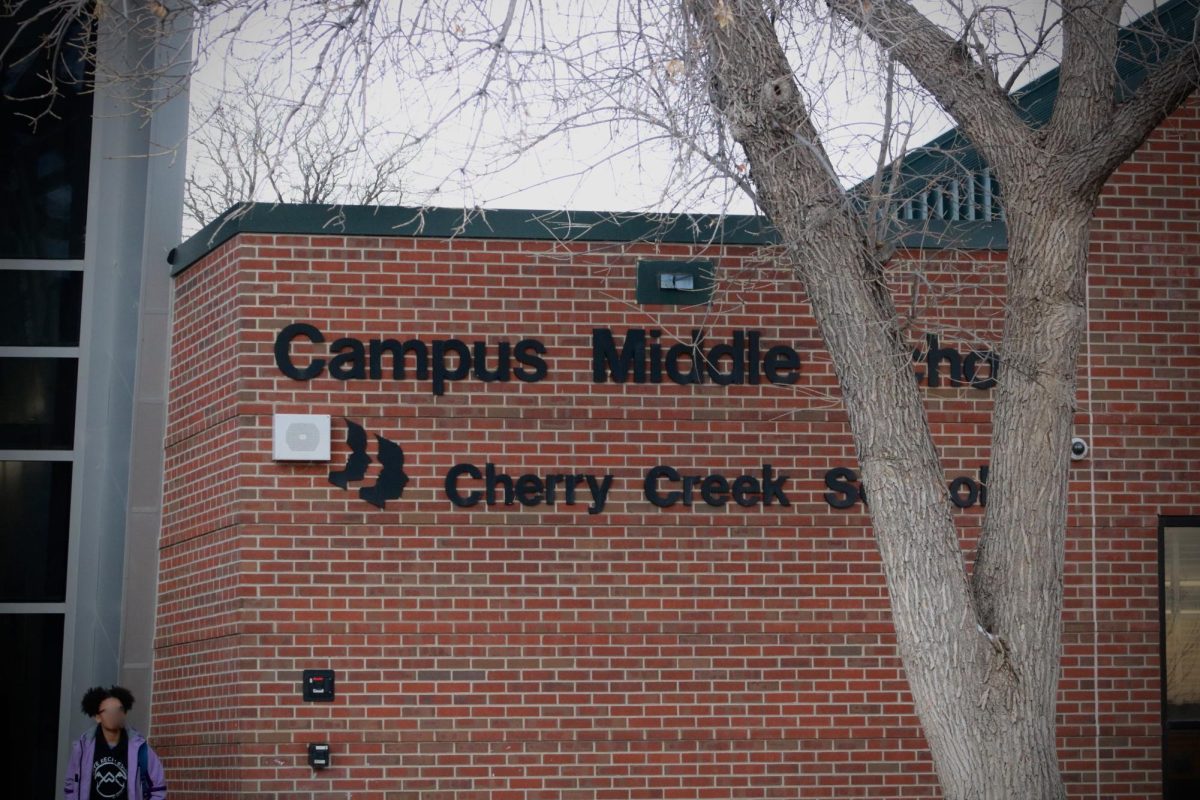Ducks land in Creek’s West Courtyard
Biology teacher Scott Dawkins gives us a window into what duck life is like at the school
Ducklings swim away from the photographer through the reeds in West Courtyard’s pond. Mallard ducks have large broods of ducklings because some of them inevitably fall prey to predators. At Creek, staff like biology teacher Scott Dawkins work to keep the ducklings safe as much as they can. “This year I actually ordered little solar powered cameras,” Dawkins said. “I’d love to keep track of them, it’s just that sometimes the circle of life wins, we’ll just put it that way.”
May 14, 2021
“There are ducklings!”
Students in Kari Peterson’s Algebra 2 class excitedly crowded around windows facing West Courtyard, pointing out seven ducklings and their mother before fifth period this Friday.
The ducklings emerged this week and are currently less than the size of a baseball each. Their parents, a pair of mallard ducks, nest in West Courtyard every year. According to Cornell Lab of Ornithology, these ducklings are likely only a few days old.
Ducks have been coming to Creek and its West Courtyard for generations. And although they mostly take care of themselves, the humans of Creek also do their part to ensure that the young ducklings survive.
“The magpies will pick them off one by one,” biology teacher Scott Dawkins said of the greatest danger to the ducklings, in addition to birds of prey like great horned owls and red-tailed hawks. But Dawkins also said that he and others have taken several steps to protect the ducks, pointing out some CDs hanging from a tree above the pond.
“Last year we did some research and found that if you paint discs, when they turn and spin and catch light, it reflects and it’s supposed to ward off the magpies, but I don’t think that works,” he said. “We put out mannequins last year, we did all these things, but you can’t be there all the time, so it just kind of is what it is.”
Observers of the ducks today could watch as the mother duck cautiously gave her young orders to stay still and near her when a magpie landed on a branch directly above.
Several years ago, these ducks laid their eggs in the other West Courtyard, the smaller one where the school garden is.
“The ducks actually used to lay over [in the other courtyard], but they need a pond, so we used to have to do a ‘walking of the ducks’ across the hall,” Dawkins said. “We lined up desks to make a tunnel and lead them outside.”
In addition to the ducks and an assortment of other birds, the West Courtyard, originally built to provide a green space within the school and to give every classroom a window while still keeping the school compact, is home to several squirrel families, a multitude of turtles – some just the size of a quarter – and even fish.
“They’ve been here a while. I think it was from a science teacher from probably decades ago who did a lab and released them and they’ve kind of just been doing their own thing,” Dawkins said of the turtles. “I think there’s also a couple of koi in that pond that survived that have been out there for a long time.”
The ducks are an important part of Creek life. The surviving ducklings from this brood will likely fly away by the end of July, and Dawkins said he’s willing to do a lot to help them make it that far.
“If you ever come by and you’re watching and you see magpies, tell me,” he said. “I’ll go out and scare them away.”

